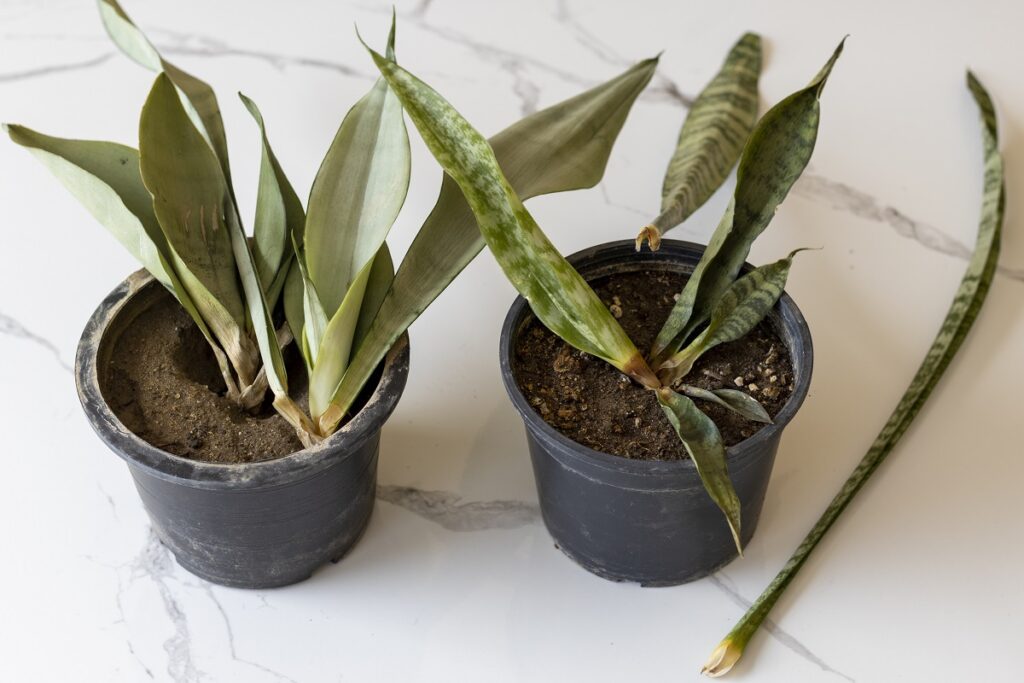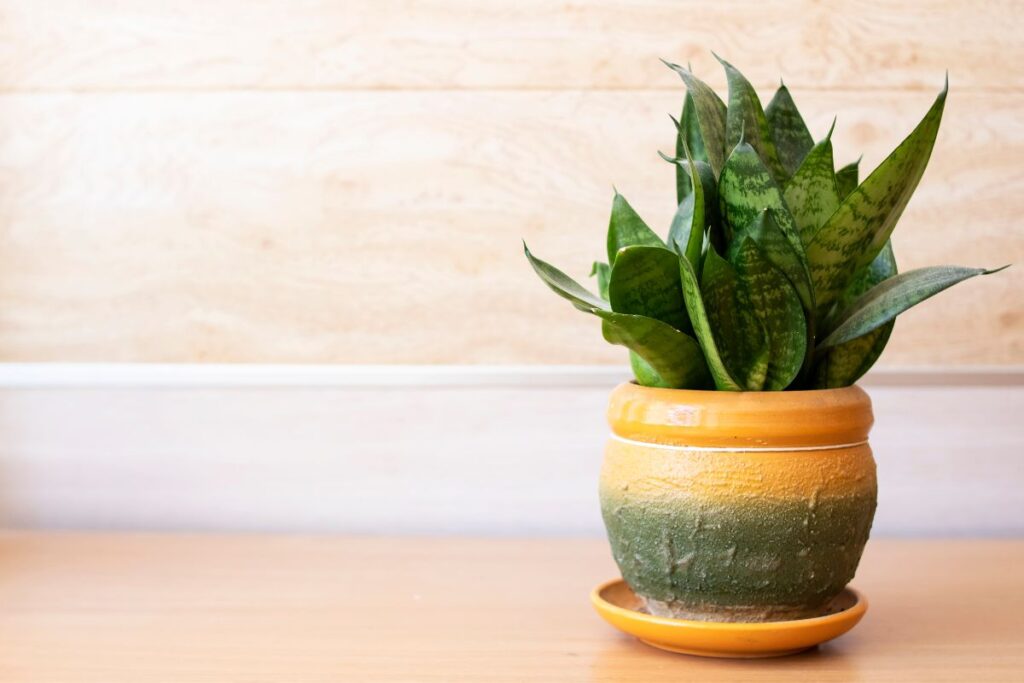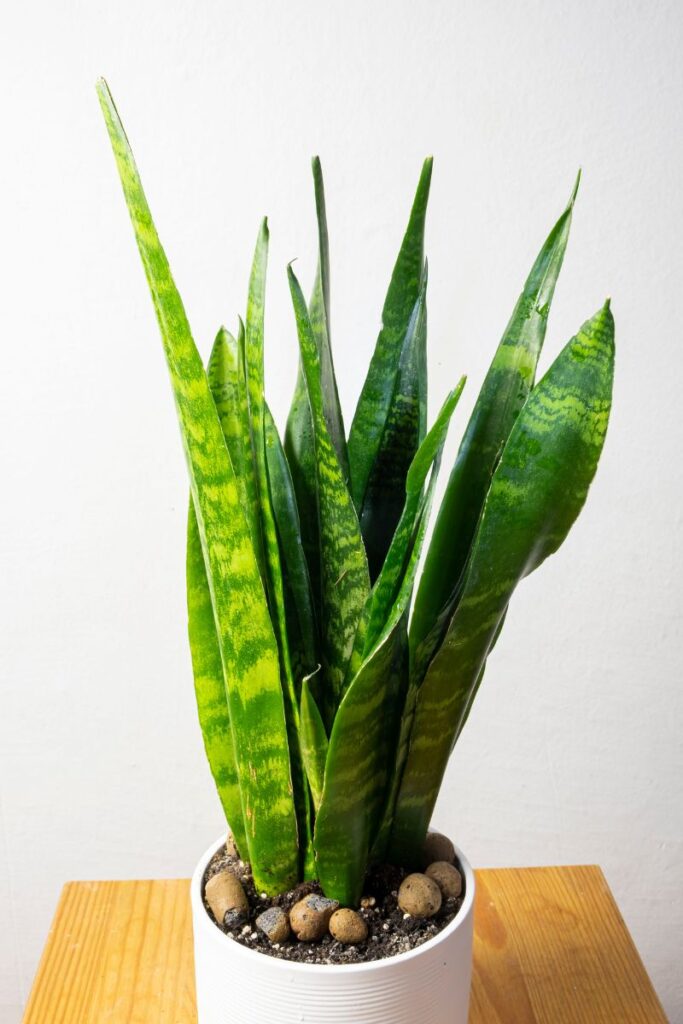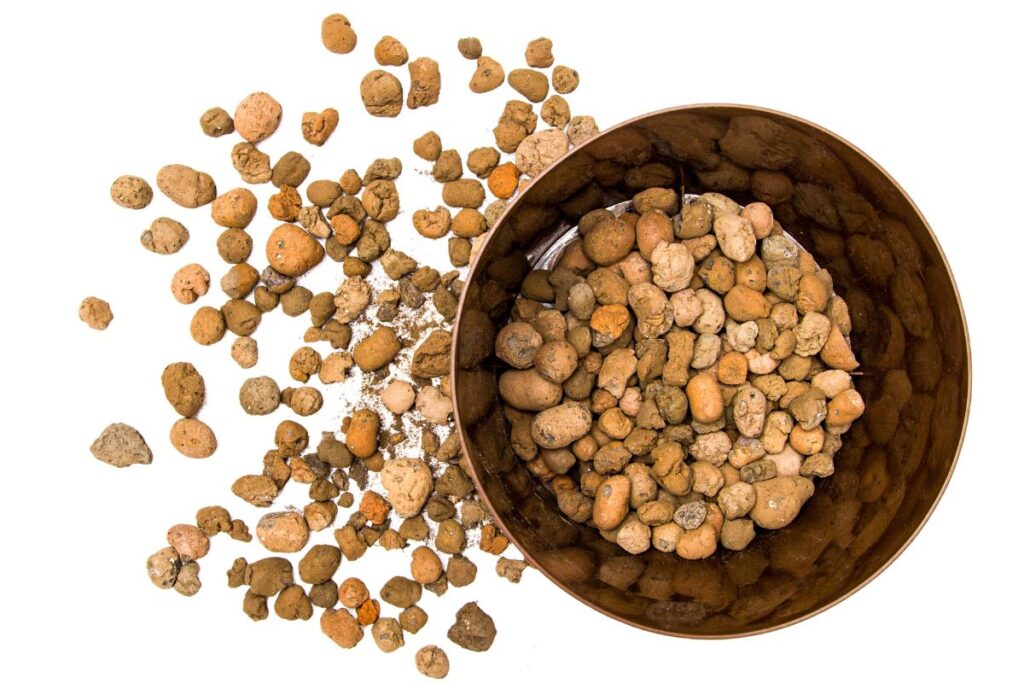If you’re looking for an easy-care houseplant to add some greenery and life to your home, then a Snake Plant is a perfect choice. Not only are they attractive plants with sword-like leaves that come in various shades of green, but they are also incredibly hardy and require minimal care. But one question often arises: do Snake Plants need drainage holes? I’m here to help answer this question, as well as provide essential tips on caring for your new plant!

When it comes to growing any type of indoor plant, proper drainage is key. Without adequate drainage, excess water can build up and cause root rot or other issues. Root rot is a serious problem that can kill even the most resilient of plants, so knowing whether or not your pot has proper drainage is very important. So let’s take a closer look at exactly what kind of drainage requirements Snake Plants have and how best to ensure their health!
The good news is that while most potted plants do need some form of drainage system such as holes in the bottom of the pot or gravel in the base, Snake Plants don’t necessarily require them. That said, providing adequate drainage will still be beneficial when it comes to avoiding overwatering which could lead to root rot down the line. With these considerations in mind, we’ll now explore the essential tips needed when caring for a Snake Plant—from soil selection through to watering practices—so read on!
Contents
- 1 Problems Caused By Lack Of Drainage
- 2 Do Snake Plants Need Drainage Holes And Why?
- 3 How To Water Your Snake Plant Without Drainage Holes
- 4 How To Treat Problems Caused By Lack Of Drainage
- 5 Frequently Asked Questions
- 5.1 Do snake plants like bigger pots?
- 5.2 Do snake plants like tight pots?
- 5.3 Do snake plants need shallow pots?
- 5.4 Do snake plants need pebbles?
- 5.5 Do snake plants drink from the bottom?
- 5.6 Is it better to bottom water snake plants?
- 5.7 Do snake plants need lots of drainage?
- 5.8 How much water should I use to water my snake plant?
- 5.9 Can snake plants sit in water?
- 5.10 Can a snake plant recover from overwatering?
- 5.11 What do I do if my snake plant is too wet?
- 5.12 How do I know if my snake plant is getting enough water?
- 5.13 What causes brown tips on snake plants?
- 5.14 Do snake plant roots like to be crowded?
- 5.15 Do snake plants need support?
- 6 Conclusion
Problems Caused By Lack Of Drainage

I’m sure you’re familiar with the saying ‘Too much of a good thing’—it applies to snake plants too! Pots without drainage holes can lead to root rot, as excess moisture accumulates in the soil and oxygen deficiency occurs. If left unchecked, this can result in fungal infection which is detrimental to your plant’s health.
The signs of root rot in snake plants include:
- Soft, mushy, or discolored roots
- Foul odor from the soil or plant
- Wilting or drooping leaves
- Yellowing or browning leaves
- Leaf drop
- Stunted growth
- Soil that remains constantly wet or waterlogged
- Slowed or stopped growth.
Therefore, drainage holes are essential for any pot containing a snake plant, since they allow water to run off instead of collecting at the bottom. This helps keep the soil loose and provides adequate aeration and ventilation so that your plant receives all the necessary nutrients. In addition, it prevents stagnation and diseases caused by overwatering or over-fertilizing.

When choosing pots with drainage holes, be mindful not to pick ones that are too large; as this could cause nutrient deficiencies due to excessive watering and leaching out of vital minerals from the soil. Ensure that there is enough space between each hole so that water flows freely through them when necessary. Taking these steps will help maintain healthy growing conditions for your snake plant while avoiding potential problems associated with improper drainage.
Do Snake Plants Need Drainage Holes And Why?
Now that we know the problems caused by lacking drainage, let’s take a look at whether snake plants need drainage holes. The short answer is yes and no—snake plants should ideally be planted in pots with either one or two drainage holes to prevent waterlogging and promote healthy root growth. Here are three essential tips for planting your snake plant:
- Place the pot on a tray or dish to catch the excess water from running out of the bottom.
- Plant it in well-draining soil so that moisture can pass through easily without becoming too wet.
- Make sure there are drainage holes in the bottom of your pot to allow excess water to escape.

Snake plants thrive when they have proper drainage, as this helps ensure their roots don’t sit in standing water which can cause rot and other diseases. Plants in pots without drainage holes will not have enough oxygen available to their roots, making it difficult for them to absorb nutrients from the soil properly and eventually leading to unhealthy plants. If you choose to use pots without holes, make sure to check often if there is any standing water beneath the surface of your soil before watering again—if there is, then you’ll want to wait until all of it has been absorbed before adding more!
When selecting pots for your snake plant, opt for those with adequate drainage hole sizes (around 1/4 inch) and spacing between each hole (at least 2 inches). You may also find that some containers come with mesh inserts explicitly designed for allowing better aeration and draining capabilities; this would be ideal for growing a healthy snake plant indoors! Finally, always remember that providing proper drainage conditions is an essential part of caring for these indoor plants successfully. With just a few simple steps, you can help ensure your snake plant stays happy and thriving year after year!
Suggested Reading:
Do Snake Plants Like To Be Misted?
How To Water Your Snake Plant Without Drainage Holes
It is possible to care for a snake plant without drainage holes, but it requires attention and proper technique. To ensure your snake plant receives the necessary moisture to thrive in its environment, you should use a moisture meter on a weekly basis. This will help you determine when the soil needs water based on how dry or moist it is.
- Reliable and accurate
- Easy to read
- Less hurts to the roots
When watering your snake plant in a pot without drainage holes, be sure to only use tap water that has been sitting out overnight so that any chlorine can evaporate off. You’ll then want to add just enough water until the top layer of potting mix feels damp—don’t over-water! Be aware of overwatering as this could lead to root rot if not caught early enough. After watering, check with your moisture meter again after 24 hours to make sure there isn’t too much moisture present.
With regular monitoring and proper care, you can successfully keep a healthy snake plant even in a pot without drainage holes. By checking the moisture levels regularly and only adding enough water for what’s needed at the time, you can prevent issues such as root rot from occurring. So take good care of your beloved houseplant and enjoy watching it grow and flourish!

How To Treat Problems Caused By Lack Of Drainage
Snake plants are known for their hardiness, but they still require proper drainage. Without it, your plant can develop serious issues such as fungal infection and root damage. Even though these plants don’t need a lot of water or fertilizer to thrive, they do need adequate oxygen levels in the soil which is only possible with good drainage.
To ensure your snake plant gets the optimal level of drainage here are some tips:
- Always use a pot with holes at the bottom so that excess water can escape when you water them.
- If using decorative pots without drainage holes, make sure you insert a layer of gravel or pebbles beneath the soil before planting the snake plant. This will help prevent oxygen deprivation from occurring by allowing air pockets between the roots and soil particles.

- Avoid overwatering your snake plants as this can lead to poor drainage and cause root rot due to lack of oxygen in the soil.
These simple steps will go a long way towards preventing problems caused by lack of drainage on your Snake Plant. With minimal effort required, there’s no excuse not to give them what they need!
Suggested Reading:
How To Separate Snake Plant: Step-By-Step Guide
Frequently Asked Questions
Do snake plants like bigger pots?
Snake plants prefer to be slightly root-bound, so they don’t necessarily need bigger pots unless they have outgrown their current one.
Do snake plants like tight pots?
Yes, snake plants prefer slightly tight pots as it mimics their natural growing environment and promotes healthy root development.
Do snake plants need shallow pots?
Snake plants do not require shallow pots, but they do prefer pots with good drainage to prevent waterlogging.
Do snake plants need pebbles?
Pebbles can be used as a decorative element on top of the soil or as a drainage layer at the bottom of the pot, but snake plants do not require pebbles to thrive.
Do snake plants drink from the bottom?
Snake plants can take up water from the bottom if there is excess water in the saucer, but they primarily absorb water from their roots.
Is it better to bottom water snake plants?
Bottom watering can be a useful method for snake plants as it prevents water from sitting on the leaves and can promote deeper root growth.
Do snake plants need lots of drainage?
Yes, snake plants require well-draining soil and good drainage to prevent waterlogging, which can lead to root rot.
How much water should I use to water my snake plant?
Snake plants prefer to dry out between waterings, so a moderate amount of water should be used, enough to saturate the soil without leaving it waterlogged.
Can snake plants sit in water?
No, snake plants should not sit in water as this can lead to root rot.
Can a snake plant recover from overwatering?
If caught early, a snake plant can recover from overwatering by adjusting its watering schedule and allowing the soil to dry out. However, severe cases of overwatering can lead to irreparable damage.
What do I do if my snake plant is too wet?
If a snake plant is too wet, it should be removed from its pot and allowed to dry out. If there are signs of root rot, the affected roots should be trimmed before repotting.
How do I know if my snake plant is getting enough water?
To know if your snake plant is getting enough water, you should check the soil moisture level. Snake plants prefer to dry out between waterings, so the soil should be allowed to dry slightly before watering again. You can check the soil moisture by inserting your finger about an inch deep into the soil. If it feels dry, it’s time to water. Additionally, healthy snake plants have firm, upright leaves, while overwatered or underwatered plants may have wilted or yellowing leaves.
What causes brown tips on snake plants?
Brown tips on snake plants can be caused by overwatering, underwatering, low humidity, or exposure to cold temperatures.
Do snake plant roots like to be crowded?
Yes, snake plant roots prefer to be slightly crowded, but they should still have enough space to grow and access water and nutrients.
Do snake plants need support?
Snake plants have sturdy leaves and do not typically require support. However, if the leaves become too heavy or bend over, they can be propped up with stakes or a support structure.
Conclusion
In conclusion, it’s important to consider the need for drainage holes when caring for snake plants. Without proper drainage, your plant can suffer from root rot and other issues caused by the oversaturation of water in the soil. It is possible to provide adequate moisture without creating a draining situation; however, if you decide to do so, be sure to monitor the amount of water that remains in the pot after watering and adjust accordingly. Taking care not to overwater your snake plant will help ensure its health and long life.
By understanding what kind of environment your snake plant needs, you can create an ideal home where it can thrive with minimal effort on your part. Properly draining pots are essential for most plants (including snake plants), but there are also ways to properly care for them without traditional drainage options. As long as you pay careful attention when watering and keep an eye out for any signs of distress in your plant, you’ll have no problem keeping it healthy and happy!

